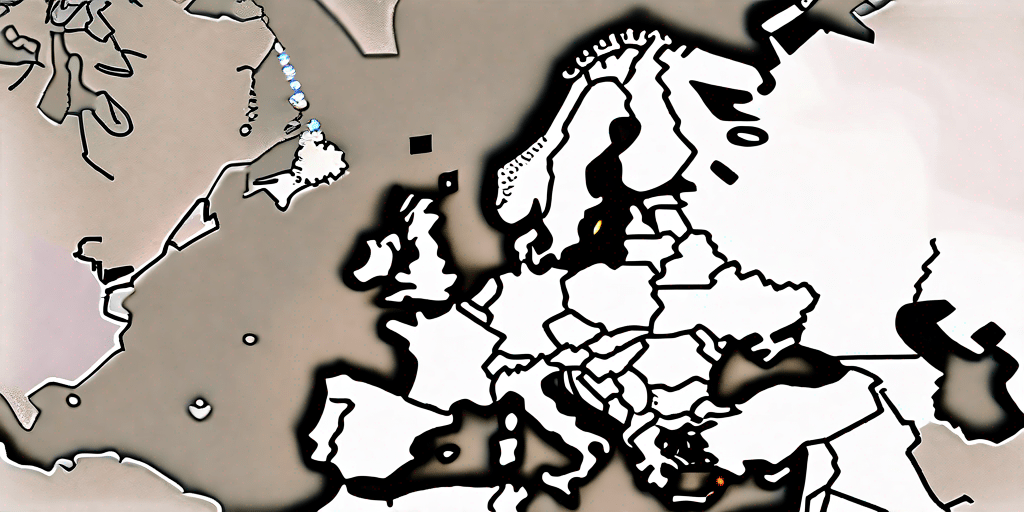In today’s increasingly digital world, the concept of identity has taken on new dimensions. With the rise of online transactions, digital services, and the sharing of personal information, individuals and organizations alike need a secure and reliable means of identifying themselves in the virtual space. Enter the European Digital Identity, a groundbreaking initiative aimed at revolutionizing the way we establish and authenticate our digital selves.
Understanding the Concept of European Digital Identity
At its core, the European Digital Identity refers to a secure and interoperable system that allows citizens, businesses, and public administrations within the European Union (EU) to verify and authenticate their online identities. It is designed to provide users with a unique digital identity that can be used across different platforms, services, and countries, eliminating the need for multiple usernames and passwords.
The concept of European Digital Identity has gained significant traction in recent years due to the increasing digitization of services and the need for secure and convenient online interactions. With the proliferation of digital platforms and the rise of cyber threats, there is a growing demand for a robust and user-centric digital identity solution that can ensure trust, privacy, and security.
Definition of European Digital Identity
The European Digital Identity can be defined as a user-centric, privacy-preserving, and user-controlled digital ID that enables individuals and organizations to access digital services with ease and confidence while safeguarding their personal data. It aims to promote trust and security in the digital space, empowering users with greater control over their online interactions.
With the European Digital Identity, users have the ability to manage their digital identities, granting or revoking access to their personal information as they see fit. This user-controlled approach ensures that individuals have full control over their data and can make informed decisions about sharing it with service providers.
Key Components of the European Digital Identity
The European Digital Identity comprises various components that work together to create a seamless and secure user experience. These include:
- A unique identifier: Each user is assigned a unique digital identity number that serves as their online identifier. This identifier is securely stored and can be used across different platforms and services, eliminating the need for multiple usernames and passwords.
- Authentication mechanisms: Robust authentication methods, such as biometrics or secure tokens, ensure the validity and integrity of users’ digital identities. These mechanisms provide an additional layer of security, making it difficult for unauthorized individuals to impersonate users or gain access to their accounts.
- Interoperability framework: The system is designed to work across different platforms, services, and countries, enabling users to use their digital identity seamlessly. This interoperability ensures that users can access a wide range of services and platforms without the need to create separate accounts or go through complex registration processes.
- Secure storage: Users’ personal data and digital identities are securely stored and protected against unauthorized access or misuse. The European Digital Identity system employs robust encryption and security measures to safeguard user information, ensuring that it remains confidential and protected.
- Privacy-preserving features: The European Digital Identity prioritizes privacy and data protection. It incorporates privacy-enhancing technologies and principles, such as data minimization and user consent, to ensure that users have control over their personal information and can choose how it is shared and used.
By combining these key components, the European Digital Identity aims to provide a comprehensive and user-friendly solution for digital identity management. It offers individuals and organizations a secure and convenient way to access online services, while also promoting trust, privacy, and security in the digital ecosystem.
The Importance of European Digital Identity
The European Digital Identity holds immense importance in today’s digital landscape, offering numerous benefits to individuals, businesses, and governments. Let’s explore some of its key advantages in more detail.
Enhancing Security and Privacy
One of the fundamental goals of the European Digital Identity is to enhance security and privacy in the digital realm. By providing a robust and standardized means of verifying online identities, the system reduces the risk of identity theft, fraud, and unauthorized access. Additionally, the user-centric nature of the European Digital Identity grants individuals greater control over their personal data, allowing them to choose what information they share and with whom.
In an increasingly interconnected world, where cyber threats are constantly evolving, having a secure and reliable digital identity is crucial. The European Digital Identity addresses this need by implementing state-of-the-art encryption and authentication mechanisms, ensuring that individuals’ online activities are protected from malicious actors. This not only safeguards sensitive information but also instills trust and confidence in digital transactions.
Furthermore, the European Digital Identity framework incorporates privacy-by-design principles, prioritizing the protection of individuals’ privacy rights. By adhering to strict data protection regulations, such as the General Data Protection Regulation (GDPR), the system ensures that individuals’ personal information is handled responsibly and transparently. This commitment to privacy empowers individuals to participate in the digital economy with peace of mind, knowing that their data is being handled in a secure and ethical manner.
Facilitating Seamless Transactions
Another critical aspect of the European Digital Identity is its ability to facilitate seamless online transactions. With a unified digital identity, users can easily access various digital services, such as e-commerce platforms, online banking, or government portals, without the need for multiple registrations or cumbersome authentication processes. This streamlining of transactions not only saves time but also promotes efficiency and convenience in today’s fast-paced digital economy.
Imagine a scenario where individuals can effortlessly log in to their favorite online shopping websites, securely make purchases, and have their orders delivered to their doorstep, all with just a few clicks. The European Digital Identity makes this vision a reality by eliminating the need for multiple usernames and passwords, reducing the friction associated with online transactions. This seamless experience not only benefits individuals but also drives economic growth by encouraging increased online engagement and consumer confidence.
Moreover, the European Digital Identity opens up new opportunities for businesses by enabling them to offer personalized and tailored services to their customers. With access to verified customer information, businesses can provide targeted recommendations, personalized offers, and improved customer support, enhancing the overall customer experience. This level of customization not only strengthens customer loyalty but also drives business growth in an increasingly competitive digital marketplace.
In conclusion, the European Digital Identity plays a vital role in enhancing security, privacy, and convenience in the digital realm. By providing individuals with a secure and user-centric means of verifying their online identities, the system fosters trust, promotes efficiency, and unlocks new possibilities for individuals, businesses, and governments alike. Embracing the European Digital Identity is not just a technological advancement, but a step towards a more inclusive, secure, and interconnected digital future.
The Role of European Digital Identity in the Digital Economy
The European Digital Identity has a significant role to play in fostering the growth and development of the digital economy within the European Union. Let’s explore two key areas where its impact is particularly pronounced.
Boosting E-commerce
In the realm of e-commerce, trust and security are paramount. The European Digital Identity offers consumers a safe and reliable means of verifying themselves when making online purchases. By instilling confidence in consumers, the digital identity framework aims to boost e-commerce activities within the EU, driving economic growth and fostering cross-border trade.
Promoting Digital Services
The European Digital Identity also plays a crucial role in promoting the adoption and usage of digital services within the EU. By providing a standardized and user-friendly authentication mechanism, the system eliminates one of the key barriers to entry for individuals and businesses seeking to utilize digital services. This, in turn, encourages innovation, drives digital inclusion, and contributes to the overall digital transformation of the European society and economy.
Challenges and Solutions in Implementing European Digital Identity
While the European Digital Identity holds immense promise, its implementation is not without challenges. Let’s explore some of the key hurdles that need to be overcome and the potential solutions.
Overcoming Technical Hurdles
One of the critical challenges in implementing the European Digital Identity is ensuring interoperability and compatibility across different platforms and systems. This requires the development of robust technical standards and protocols that facilitate seamless integration and data exchange. Collaboration among stakeholders and the adoption of open standards can help overcome these technical hurdles and create a truly interoperable digital identity ecosystem.
Addressing Legal and Regulatory Issues
The implementation of the European Digital Identity also necessitates addressing legal and regulatory issues surrounding data protection, privacy, and cross-border data flows. Harmonizing national laws and regulations, ensuring compliance with the General Data Protection Regulation (GDPR), and fostering international cooperation are crucial steps in overcoming these legal and regulatory challenges.
The Future of European Digital Identity
Looking ahead, the European Digital Identity is poised to shape the future of digital identity not only within the EU but also globally. Let’s explore some potential developments and innovations that could further advance the digital identity landscape.
Potential Developments and Innovations
As technology continues to evolve, so too will the European Digital Identity. We can expect to see developments in areas such as biometrics, blockchain, and decentralized identity, all of which have the potential to enhance the security, privacy, and usability of digital identities. Additionally, advancements in artificial intelligence and machine learning could lead to more robust and intelligent authentication mechanisms, further strengthening the European Digital Identity ecosystem.
Impact on Global Digital Identity Landscape
The success and adoption of the European Digital Identity could have a ripple effect throughout the global digital identity landscape. By showcasing the benefits of a user-centric and privacy-preserving digital identity framework, the EU’s initiative could inspire other regions and countries to develop similar systems. This, in turn, would contribute to a more secure, trusted, and interconnected global digital ecosystem.
In conclusion, the European Digital Identity represents a significant leap forward in the way we establish and authenticate our digital identities. With its focus on security, privacy, and interoperability, the system holds immense promise in enhancing trust, promoting convenience, and driving digital transformation within the European Union. By addressing the challenges and embracing future developments, the European Digital Identity has the potential to revolutionize the global digital identity landscape, paving the way for a safer and more connected digital future.



